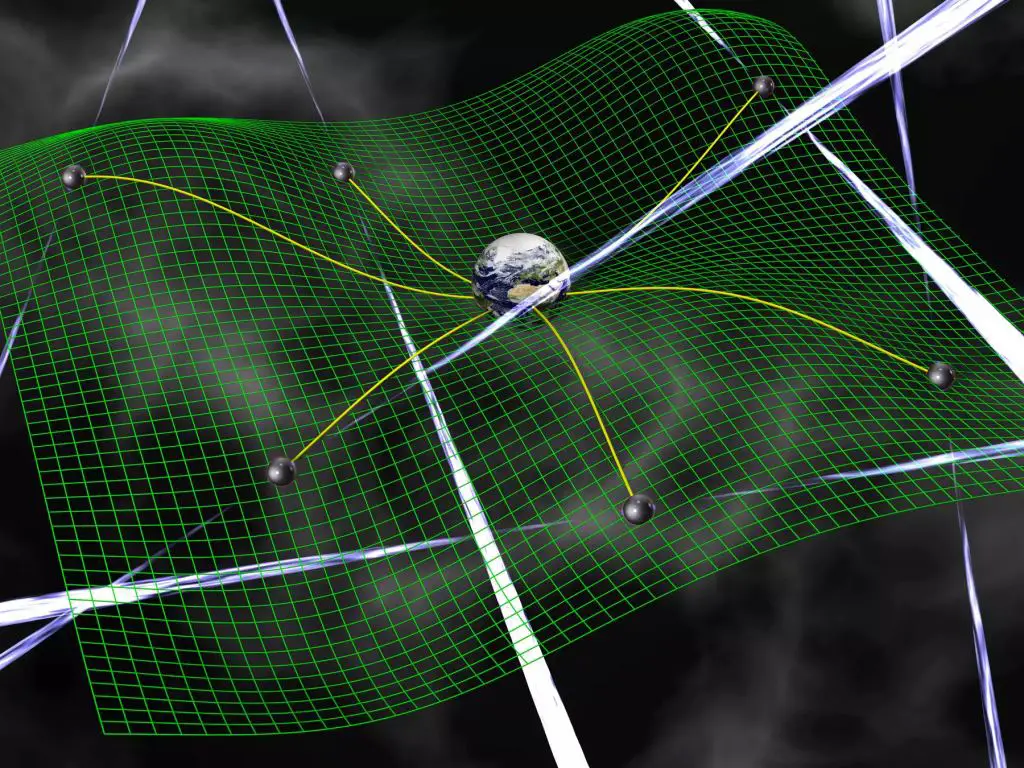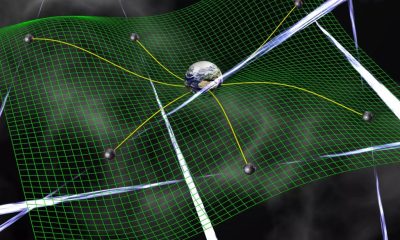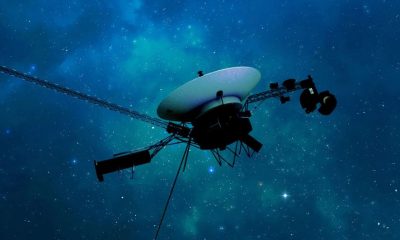News
Astronomers Discover the Largest Pair of Supermassive Black Holes Ever Observed

Astronomers have made a groundbreaking discovery that sheds light on the formation of supermassive black holes, the most massive pair ever seen in the universe. These black holes, found 24 light years apart, have a combined mass of 28 billion solar masses, making them the heaviest pair ever observed.
Supermassive black holes are a common feature at the centers of most galaxies, but the process of their formation has long been a mystery to astronomers. One prevailing theory suggests that these black holes merge repeatedly to grow larger. The recent discovery of the massive pair of black holes supports this idea, offering valuable insights into the evolution of these enigmatic cosmic entities.
Black holes are regions of space where the gravitational pull is so strong that not even light can escape. While the concept of black holes may seem complex, their significance in the study of astrophysics cannot be overstated. Supermassive black holes, with masses ranging from hundreds of thousands to billions of times that of the Sun, are believed to exist at the core of most massive galaxies.
Galaxy mergers are a common occurrence in the universe, and they often result in the formation of binary black hole pairs. These pairs consist of two black holes orbiting each other, eventually merging to form a single entity. While this merging process has never been directly observed, a recent study published in the Astrophysical Journal offers new insights into this phenomenon.

The team of astronomers, led by Tirth Surti, studied a binary black hole system within the elliptical galaxy B2 0402+379. Using data from the Gemini North Telescope, they were able to analyze the system in unprecedented detail. The black holes in this system are only 24 light years apart and have a combined mass of 28 billion solar masses.
By studying the stars surrounding the black holes with the Gemini Multi-Object Spectrograph (GMOS), the team was able to measure their velocity. This velocity data not only helped determine the mass of the black hole pair but also provided insights into the mechanisms that delay and potentially stall their merging process.
The researchers found that B2 0402+379 is a “fossil cluster,” resulting from the merger of an entire cluster of galaxies. In such cases, the black holes do not collide directly but instead orbit each other in a bound system. As they pass each other, energy is transferred to nearby stars, gradually bringing the black holes closer together.
However, in the case of supermassive binary black holes, the sheer mass of the objects makes the merging process more complex. The team suggests that an abundance of surrounding stars would be necessary to slow down the black holes sufficiently for them to merge. The lack of sufficient matter in the vicinity of these black holes may prevent their orbits from decaying and merging.
It remains unclear whether the binary black holes in B2 0402+379 will eventually merge or continue orbiting indefinitely. If they do merge, the resulting gravitational waves could be exceptionally powerful, potentially exceeding the impact of stellar mass black hole mergers by hundreds of millions of times.
Source: Astronomers Measure Heaviest Black Hole Pair Ever Found
News
Further Support for Gravitational Wave Background in the Universe

The discovery of the gravitational wave background in 2016 marked a significant milestone in our understanding of the Universe. This groundbreaking discovery was further validated by the release of a second data set from the European Pulsar Timing Array, along with the addition of data from the Indian Pulsar Timing Array. These complementary studies have provided more evidence for the existence of the gravitational wave background, shedding light on the cosmic phenomena that shape our universe.
Gravitational waves are ripples in spacetime that are generated by violent processes such as merging black holes and colliding neutron stars. Predicted by Einstein in 1916 as part of his General Theory of Relativity, these waves have the ability to travel through space, largely unimpeded by any obstacles in their path. The first detection of gravitational waves in 2015 by the Laser Interferometer Gravitational-Wave Observatory (LIGO) confirmed their existence, originating from a gravitational merger between two black holes located 1.3 billion light years away.

The recent confirmation of the gravitational wave background by the European and Indian Pulsar Timing Arrays indicates that we are detecting a combined signal from the mergers of supermassive black holes. This random distribution of gravity waves that permeates the Universe offers a new avenue for studying the cosmos, akin to the Cosmic Background Radiation. The collaborative efforts of various observatories and research institutions have enabled us to delve deeper into the mysteries of the Universe.

Utilizing pulsar timing arrays as galaxy-sized detectors, researchers have been able to monitor and analyze the pulse arrival times of galactic pulsars on Earth. By detecting subtle patterns in these signals, they can uncover the presence of the gravitational wave background. The latest study led by J. Antoniadis from the Institute of Astrophysics in Greece delves into the implications of the low-frequency signals observed in the recent data releases from various pulsar timing array systems.
The accumulation of data from multiple sources has provided undeniable evidence for the existence of the gravitational wave background. With ongoing Pulsar Timing Array projects, the signals of the low-frequency gravity waves will become more distinct, offering a wealth of opportunities to explore the Universe in this novel way. The focus now shifts towards interpreting these signals to unlock the secrets of the cosmos.
-

 Entertainment1 week ago
Entertainment1 week agoOlivia Munn opens up about her decision to have a full hysterectomy during breast cancer fight: ‘It was the right choice for me’
-

 News1 week ago
News1 week agoUniversity of Wisconsin-Milwaukee and Protesters reach an agreement to dismantle encampment
-

 Entertainment2 days ago
Entertainment2 days agoSimone Biles Emerges Victorious over Suni Lee and Gabby Douglas at Gymnastics Classic
-

 News2 days ago
News2 days agoFacing Criticism for Shooting Dog, South Dakota Governor Noem Discusses ‘Difficult Choices’
-

 Business20 hours ago
Business20 hours agoWho are Crypto Market Makers and Market Takers?
-

 News21 hours ago
News21 hours agoFurther Support for Gravitational Wave Background in the Universe
-

 Entertainment21 hours ago
Entertainment21 hours agoCourteney Cox Reveals Late ‘Friends’ Co-Star Matthew Perry Continues to ‘Visit’ Her Even After His Passing










